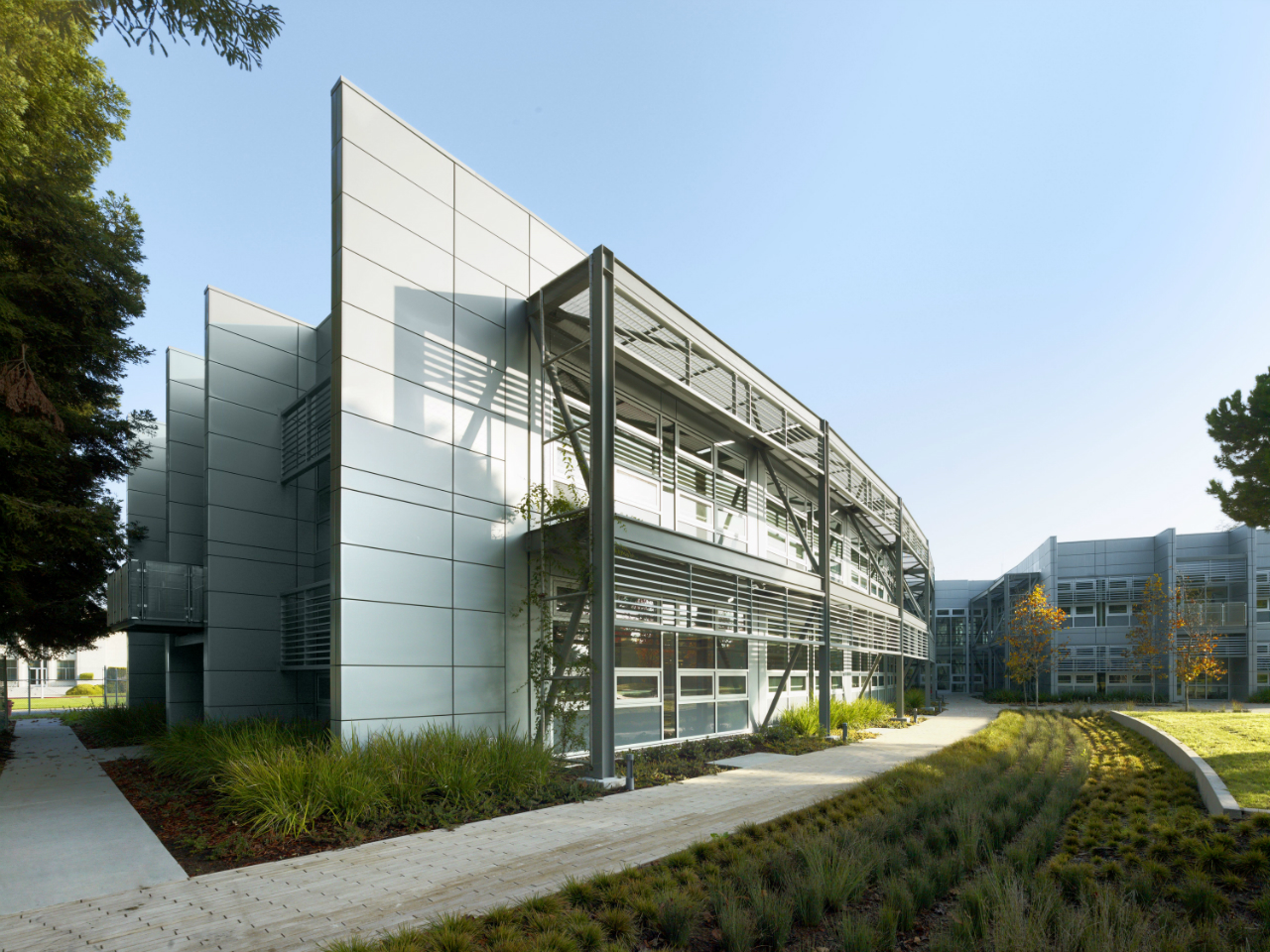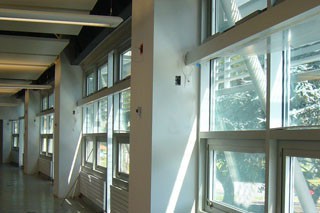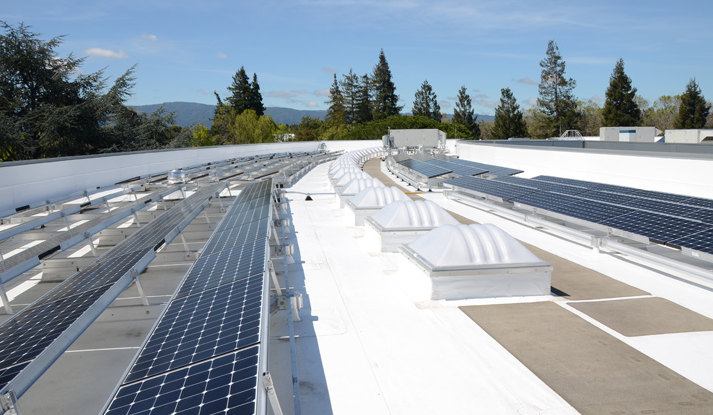Although most people associate NASA with space, the agency is also committed to advancing technology and innovations that will help solve the challenges we face right here on Earth. In 2007, NASA held a “Renovation by Replacement” competition to replace dated, inefficient buildings with modern, energy-efficient ones. For the contest, each of NASA's 10 facilities submitted proposals, and the Ames Research Center won with its idea of Sustainability Base, which is now known to be one of the greenest buildings in the federal government.
Located at the entrance of the Ames Research Center in Moffett Field, CA, Sustainability Base not only represents buildings of the future, it's also a showcase for extraordinary NASA technologies. Completed in 2012, the 50,000-square-foot building is also the workplace to over 200 NASA employees.

Sustainability Base is one of the federal government's greenest buildings. Image via archdaily.com.
Workplace
As soon as they arrive, employees who work at Sustainability Base are greeted with openness and abundant connections to nature. The lobby is overspread with daylight and a large LCD display shows how much energy the building uses and where it comes from. Everyone, including those working at desks in the center of each floor, benefits from the sunlight that teems in through the floor-to-ceiling windows and the skylights on the upper level. With large windows constantly providing fresh air flow, people are able to establish a visual and emotional connection to the landscape surrounding them.

Sustainabilty Base's floor-to-ceiling windows. Image via aecom.com.
Holding meetings in various naturally landscaped “rooms” between trees and gardens is quite common, and it isn't rare to find employees sitting on benches or at picnic tables working in harmony with nature. Each individual is also given a personal energy dashboard that shows their energy usage and suggests energy conservation activities, such as opening a window or turning off equipment that's not being used.
Sustainability
Designed not to cause harm to the environment and to be beneficial to both nature and humans, Sustainability Base generates all the power it needs to operate. The building gets a considerable amount of its own renewable power through photovoltaics, or solar panels, a highly efficient fuel cell, and a small wind turbine.

Solar panels are used to help power Sustainability Base. Image via Inhabitat.
According to nasa.gov, the building and landscape are designed “native to place,” meaning they capitalize on the natural resources of the location and blend seamlessly with their contextual culture and environment. The building's location allows it to take advantage of both the sun's span across Moffett Field and the steady Bay Area winds, so for all but about 40 days of the year, artificial lighting isn't needed.
NASA technology
One major goal of Sustainability Base is to reduce potable (drinkable) water consumption by 90% compared to traditional buildings of the same size. Its forward-osmosis water-recycling system, originally designed for the International Space Station, filters water used to flush toilets and urinals. As for the building's irrigation water, it's all reclaimed water.
Another way Sustainability Base saves energy is by generating its own power. With its electrical power system, the building produces more electricity than it consumes. Other than generating power from its on-site photovoltaic solar panels, Sustainability Base also uses solid oxide fuel cell technology, originally developed for a NASA Mars project, as a power source.
Because Sustainability Base was designed to be a waste-free system, in the end of their cycles, all the materials used within the building either go back to nature or the industry without creating waste. As for the future, NASA envisions many additional research opportunities using Sustainability Base as a living test bed.
Interested in learning more about Sustainability Base? Download the research paper below.
Want to go behind the scenes with NASA? Littelfuse has created an Exploration & Discovery experience for the engineering community as part of its 2013 Speed2Design program. Winning design engineers will get the opportunity to spend time with NASA engineers at the Johnson Space Center and learn about the latest in space technology. For more information and to enter, visit speed2design.com.
Advertisement
Learn more about Electronic Products MagazineLittelfuseNasa





